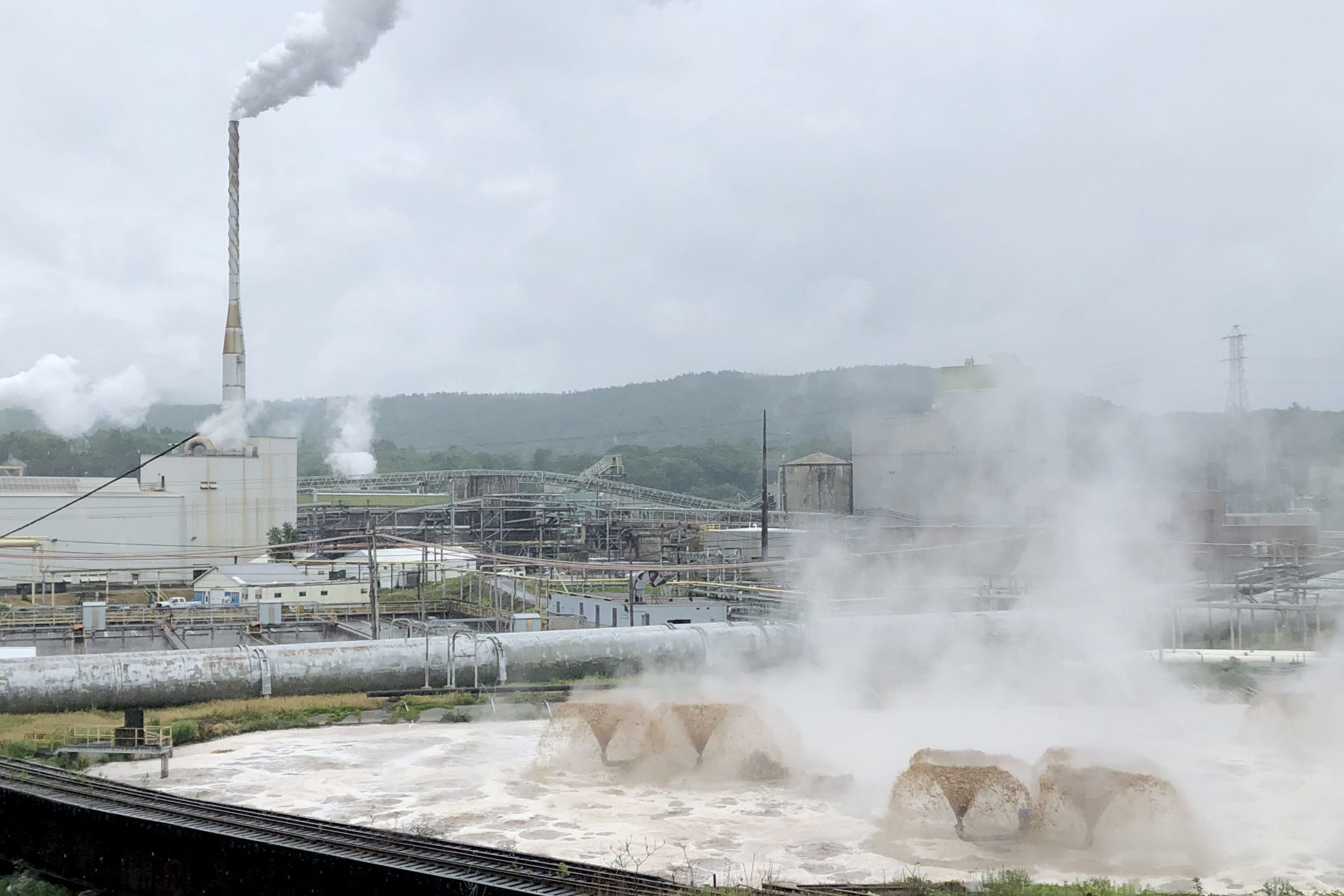An interview with report editors Aaron Cayer and Kerri Arsenault.
Read the report Maine’s River Valley: Labor, Landscapes, and Legacies.
When designers are asked to think about a community, the charge they are given is often focused on thinking about what new physical infrastructure or development is needed, or how specific buildings or spaces could be used. Based on your experience reporting on the River Valley, what do you think the usefulness or limitations are of using the lens of the built environment to think about overall community health and needs?
In the River Valley, the built environment has historically served as a symbol of capitalist pursuit—of the promise of nineteenth-century industrial mill work—that has captivated immigrant laborers, developers, writers, and artists for over a century. However, the built environment in many of these historical representations does not fully capture the injustices or environmental and health consequences that far outlive the designers and industrialists who commissioned them. It is through the stories of workers and community members on the ground that the seeming innocence of the built environment can be challenged.
In the River Valley, for instance, massive masonry dams not only suggest hydroelectricity, but also environmental destruction; windowless factory walls imply paychecks at the same time as worker exploitation; smokestacks mean money but also cancer; large brick developments offer middle-class promise as well as discipline; and huge statues of figures like Paul Bunyan memorialize both resource extraction and the consequences of such acts. While the built environment serves as a useful lens through which to study overall community health and needs, a full picture can only be developed by pairing top-down views with bottom-up; capitalist views with laborer views; “official” views with “member” views.
What is the role of design—or of designers—in identifying and addressing the challenges of a community? What are its limits and opportunities? What is scalable? What needs collaboration?
Driven by the capitalist system in which they are embedded, architects in the United States are wed to their individual clients, which has often meant that they focus on immediate parameters and timelines of a project: budgets, programs, sites, and environmental impacts. The case of the River Valley demonstrates how designers could play instrumental roles in long-term maintenance, care, evaluation, and community advocacy beyond the timeline or scope of an immediate project. What might it mean for a design professional to work on behalf of the community and/or of just or egalitarian systems, instead of individual clients and hierarchical structures?
While municipal design offices in global cities such as New York, Chicago, and Los Angeles provide models that engage the public, these possibilities at smaller and more rural scales are limited by factors of demand that have caused most professional architects in the United States to concentrate in urban areas.
If you could set the agenda, what needs to happen next to make the River Valley flourish in the years to come?
In the long term, the decline of the paper industry will inevitably challenge the River Valley and its similar working-class sisters to imagine futures in which mills no longer serve as structuring agents for everyday life. The vitality of these futures may be predicated on a community’s ability to shift away from individual pursuits and stale leadership patterns and toward new forms of collective leadership and new community narratives—ones that celebrate (rather than exploit or extract) local labor, traditions, creativity, the environment, and resources. One crucial first step in these creative revisions, however, may be to fully interrogate and raise awareness (first in local consciousness, then statewide) about the role that the River Valley plays—or could play—in broader political, economic, and social structures.
As an editor, what did you learn about doing this type of work? How can you give voice to a community? What might design professionals learn from this project about working in communities not their own?
This project revealed the need for designers to engage with community: not only as commissioned professionals, but as long-term community advocates. This project showed that collective and creative energies can instigate collective and creative solutions that do not necessarily give a voice to anyone (for it is not theirs to give), but provide mechanisms through which suppressed voices—from the past as well as present—can be amplified. Without interdisciplinary methods and tools for bolstering community power, narratives and lessons from the past are often lost, and the systems of capitalist production are allowed to continue without accountability.
We also learned that the way in which a community identifies itself, and its articulations of value, must be incorporated into placemaking and design. The River Valley is a working-class town that values such things as hard work and loyalty, and those values must be maintained and given dignity if residents are to buy in to outside influence or help.
The views expressed here are those of the authors only and do not reflect the position of The Architectural League of New York.

